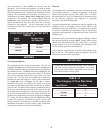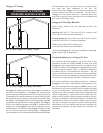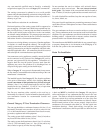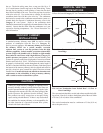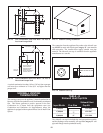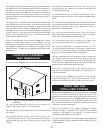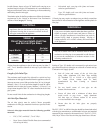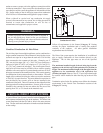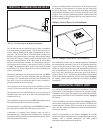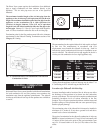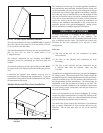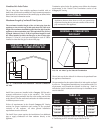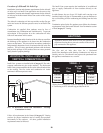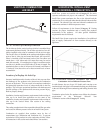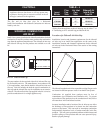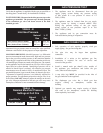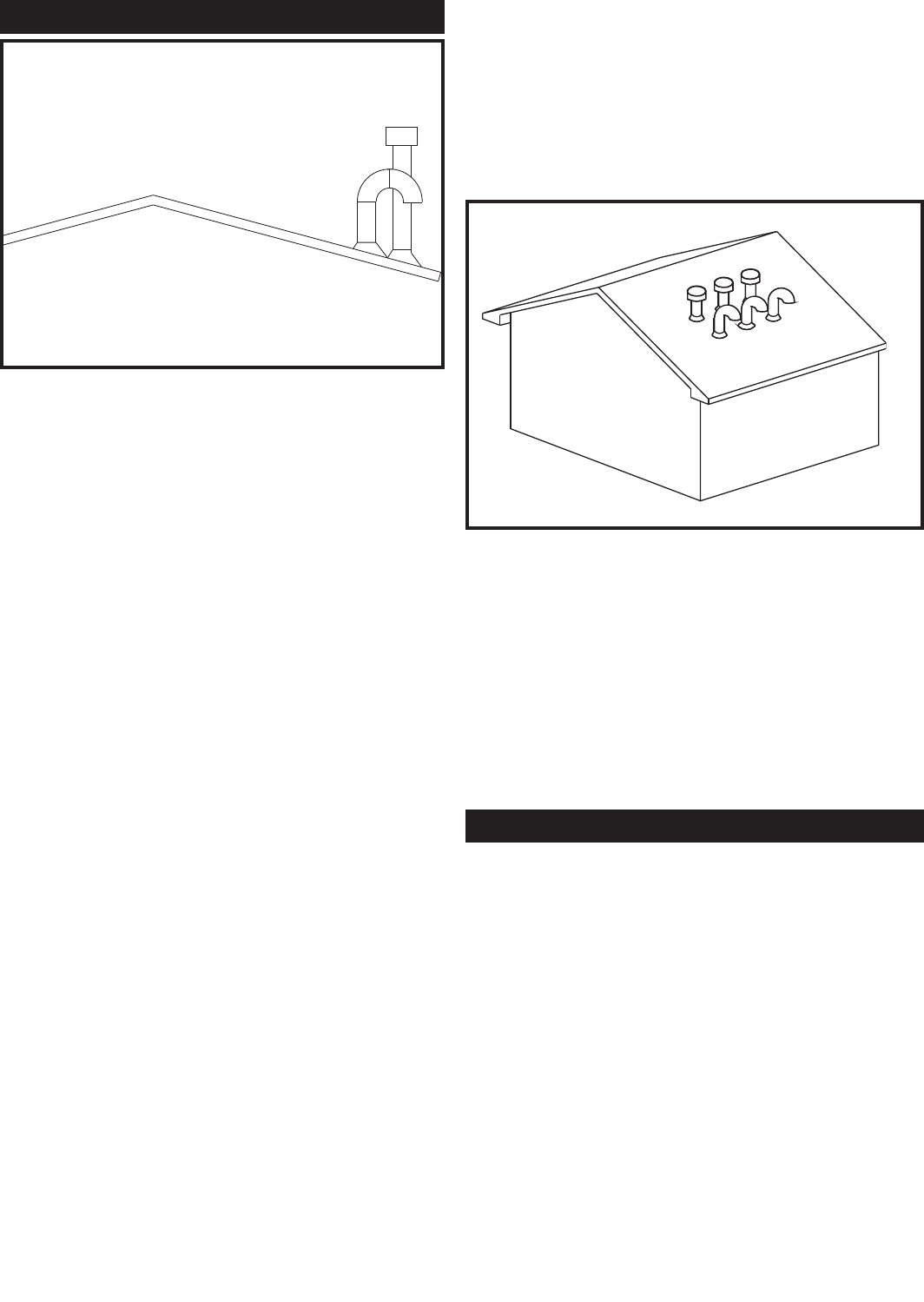
16
VERTICAL COMBUSTION AIR INLET
FIG. 21 Air Inlet Cap for Rooftop Termination
The air inlet cap for the vertical roof top air inlet is assembled
from com po nents purchased locally. The air inlet cap consist of
two 90° elbows installed at the point of termination for the air
inlet pipe. The first 90° elbow is in stalled on the rooftop at the
highest vertical point of the air inlet pipe and turned horizontal,
the second 90° elbow is installed on the horizontal outlet of the
first elbow and turned down. A 90° elbow and a 90° street elbow
may be used to make this assembly. If a straight piece of pipe is
used be tween the two elbows, it should not ex ceed 6" (150 mm)
in length. The termina tion elbow on the air inlet must be located
a minimum of 12" (0.30 m) above the roof or above normal levels
of snow accumulation.
The point of termination for the com bus tion air inlet cap MUST
be at least 3 feet (0.91 m) below the point of flue gas termination
(vent cap) if it is located within a 10 foot (3.05 m) radius of the
flue outlet. Use care to ensure that the 90° elbow assembly is
properly installed on the air inlet pipe.
The combustion air inlet cap must not be installed closer than
10 feet (3.05 m) from an inside corner of an L-shaped structure.
The termination point of the combustion air inlet cap must be
installed at least one foot (0.30 m) above the roof top and above
normal snow levels.
The combustion air cap assembly used MUST adequately protect
the combustion air inlet from wind and weather.
The combustion air cap and flue gas outlet MUST be located on
the same roof top surface and in the same pressure zone.
Combustion air supplied from outdoors must be free of
contaminants (see Com bus tion and Ventilation Air). To pre vent
recirculation of flue products in to the combustion air inlet, follow
all instructions in this section.
Incorrect installation and/or location of the air inlet cap can allow
the discharge of flue products to be drawn into the combustion
process on the heater. This can result in incomplete combustion
and potentially hazardous levels of carbon monoxide in the flue
products. This will cause operational problems with the heater and
possible spillage of flue products that can cause personal injury,
death or prop er ty damage.
Multiple Vertical Direct Vent Installations
FIG. 22 Multiple Vertical Direct Vent Installations
The combustion air inlet caps for mul ti ple appliance installations
must maintain the minimum 3 foot (0.91 m) clearance below the
closest vertical flue outlet if within 10 feet (3.05 m). Multiple flue
outlet caps may be in stalled side by side and multiple air inlet caps
may be installed side by side but the air inlet must always be at
least 3 feet (0.91 m) below the closest flue outlet if the outlet is
within 10 feet (3.05 m). All clearance and installation requirements
in this sec tion and the applicable portions of the general Category
IV venting section must be maintained on multiple ap pli ance
installations.
For venting flue products horizontally to the outdoors, follow all
re quire ments in the installation instructions for sidewall venting.
Termination point for the flue products must follow the clearance
requirements in the Sidewall Vent Termination section of Category
IV Venting.
A Horizontal Direct Vent System is installed with a Category IV flue
and a separate combustion air pipe to the outdoors. The Direct Vent
system ter mi nates both the flue and air inlet in the same pressure
zone. The flue out let and combustion air intake must both terminate
on the same sidewall.
Follow all requirements in the General Category IV Venting
sections for proper installation and of venting flue prod ucts to the
outdoors with a sidewall termination. All other general
in stal la tion requirements must be followed.
HORIZONTAL DIRECT VENT



